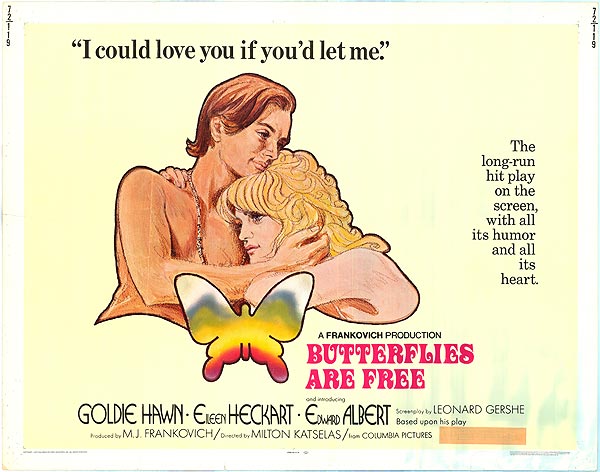
Haruki Murakami makes numerous literary, musical and film references throughout the novel Kakfa on the Shore, particularly to (who else?) Franz Kafka. Several of the characters in the book have a relationship with Kafka or “Kafkaesque” themes, the most obvious being the name the protagonist gives to himself, Kafka Tamura. While the reader never finds out his real name, he explains why he chooses the name Kafka to represent his identity. But why Kafka? It is possible that Murakami used Franz Kafka to emphasize themes of isolation and alienation, as well as to critique forms of Japanese bureaucracy and the police force investigating his father’s murder in particular.
“Nobody’s going to help me. At least no one has up till now. So I have to make it on my own. I have to get stronger–like a stray crow. That’s why I gave myself the name Kafka. That’s what Kafka means in Czech, you know–crow.”
Franz Kafka is also a figure that draws many of the characters together. Kafka Tamura is only allowed to stay in the library after revealing his name, which has an profound effect on the library staff. The tragedy of the death of Miss Saeki’s lover is shown in a song she writes for him, named Kafka on the Shore, which also becomes the title of the book. There is a consistently a switching of identities concerning the protagonist which all seem linked in some way or another to Franz Kafka. He switches from 15 year-old runaway, to “Crow”, his alter-ego, to Miss Saeki’s 15-year old boyfriend (who is also named Kafka by Miss Saeki) when he enters his old quarters. In this way, Murakami ties together some of the surreal events in the book by using Franz Kafka as a continuous reference.
With the majority of the novel being set in a library, it is abundant with literary and musical references. Much like the Franz Kafka reference, Murakami uses these references a moments in the plot that draw characters together. In their isolation, the main characters are absorbed in literature, music, and art, providing a starting point for much of their conversations and relationships. In addition to the obvious Oedipial reference throughout the novel, as Kafka searches desperately for his mother and sister, however at the same time, Murakami brings references from popular culture to life, adding a surreal and oddly comical overlay to the events in the novel. In a parallel storyline, Kafka Tamura’s father, brilliant sculptor and crazed cat murderer, takes on the pseudonym of Johnnie Walker. Colonel Sanders, the KFC icon, becomes a character in the novel, a pimp that guides Nakata and Hoshino to Takamatsu and the library, merging both storylines. Truck driver Hoshino, throws away his job and uproots himself after listening to Beethoven’s Archduke Trio, while Kafka Tamura calms himself in an isolated cabin, listening to Prince on his walkman. Murakami cultivates these references similarly to the way he develops architecture in the novel; both historical and contemporary, they blur the passing of time and are devices for the character’s self exploration and identity.
LITERARY REFERENCES:
• The Book of Thousand Nights and a Night, Translated by Sir Richard Francis Burton
• The Banquet, by Plato
• The Castle, by Franz Kafka
• The Trial, by Franz Kafka
• The Metamorphosis, by Franz Kafka
• In The Penal Colony, by Franz Kafka
• Complete Works of Natsume Sōseki
• The Tale Of Genji, by Lady Murasaki Shikibu, translated by Jun’ichirō Tanizaki
• Trial of Adolf Eichmann, (Unknown)
• Macbeth, by William Shakespeare
• Hamlet, by William Shakespeare
• Romeo and Juliet, by William Shakespeare
• Agamemnon, by Aeschylus
• The Trojan Women, by Euripides
• Rhetoric, by Aristotle
• Poetics, by Aristotle
• Electra, by Sophocles
• Oedipus Rex, by Sophocles
• The Hollow Men (poem), by T. S. Eliot
• Tales of Moonlight and Rain, by Ueda Akinari
• Matter and Memory, by Henri Bergson
• Georg Wilhelm Friedrich Hegel
• Aladdin, Added by Antoine Galland to French translation of The Book of Thousand Nights and a Night
• The Frog Prince, The Brothers Grimm
• Hansel and Gretel, by The Brothers Grimm
• Uncle Vanya, by Anton Chekhov
• A Discourse on the Origin of Inequality, by Jean Jacques Rousseau
AUTHORIAL REFERENCES:
• Leo Tolstoy
• Federico García Lorca
• Ernest Hemingway
• Charles Dickens
MUSIC REFERENCES:
• Sergeant Pepper’s Lonely Hearts Club Band, by The Beatles
• The White Album, by The Beatles
• As Time Goes By, from the movie Casablanca (Michael Curtiz, 1942)
• Blonde on Blonde, by Bob Dylan
• Mi chiamano Mimi, from La Bohème, by Giacomo Puccini
• Sonata in D Major (known as the Gasteiner), by Franz Schubert
• Crossroads, by Cream
• Little Red Corvette, by Prince
• Greatest Hits, by Prince
• Sittin’ On The Dock of the Bay, by Otis Redding
• Archduke Trio, (by Rubinstein, Heifetz and Feuermann) by Ludwig van Beethoven
• First cello concerto, (solo by Pierre Fournier) by Franz Joseph Haydn
• Posthorn Serenade, by Wolfgang Amadeus Mozart
• Kid A, by Radiohead
• My Favourite Things, by John Coltrane
• Getz/Gilberto, by Stan Getz
ARTIST/COMPOSER REFERENCES:
• Duke Ellington
• Led Zeppelin
• Schumann
• Alfred Brendel
• Rolling Stones
• Beach Boys
• Simon & Garfunkel
• Stevie Wonder
• Johann Sebastian Bach
• Hector Berlioz
• Richard Wagner
• Franz Liszt
 Cover designed by Alvin Lustig in 1946
Cover designed by Alvin Lustig in 1946
























































